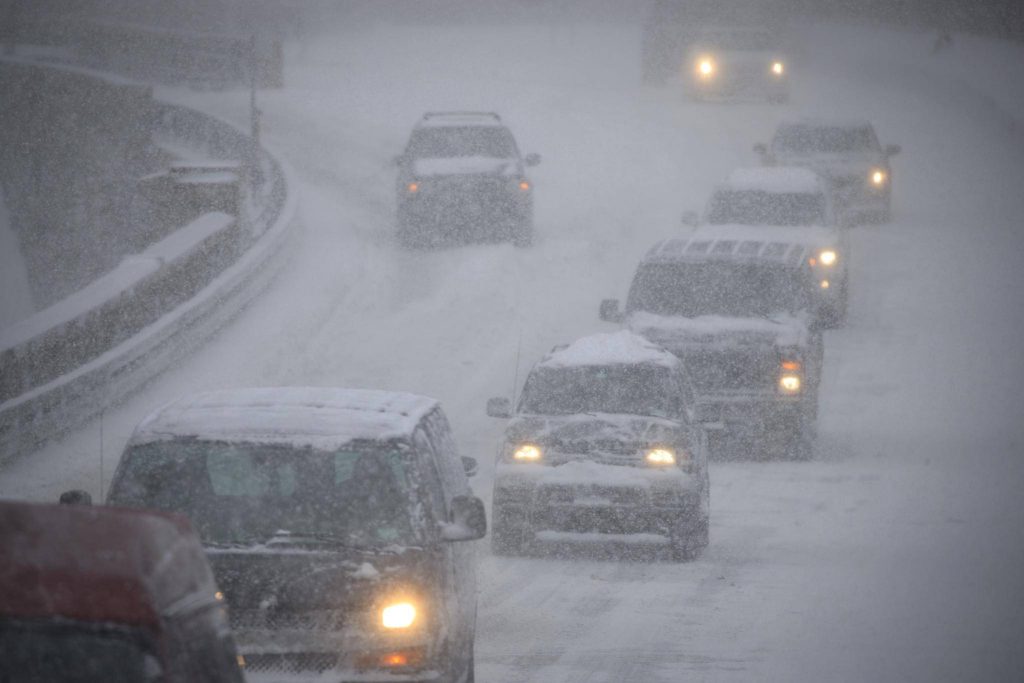Winter Driving Safety Tips in snow and ice
Winter weather, especially in snowy areas, makes driving extremely difficult. The article will show some essential notes that driver need to remember to ensure driving safety on the road.

No matter how cold the weather is, we still have to keep a warm and warm head and heart to overcome difficulties. Here are some driving safety tips you will likely encounter while driving on snow and icy roads.
1.Use winter tires
Winter tire use is a must if you want safety in snowy conditions. Even the “lust” winter tires will still perform better than conventional tires in cold and snow conditions. The reason lies in the surface of the tire that helps the car brake faster, and the rubber quality of the winter tire will of course be more effective in cold weather.
2. Spread the snow from the car
If you do not remove the ice and snow from the car, it will be very dangerous, because it causes the driver’s vision to be greatly reduced. In addition, during transport, the snow on the vehicle may fall off and affect other road users.
3. Do not accelerate / brake suddenly
Try to drive very “smooth”, do not brake urgently or suddenly accelerate, turn the car. These sudden actions will increase the vehicle’s ability to lose balance, causing the driver to lose control when the road is slippery. Use winter driving mode if available, which usually starts the car in clutch 2 so you don’t need to turn the tires if you want to accelerate after stopping. And remember to keep a safe distance from other vehicles on the road
4. Important driving safety: Do not use the cruise control in bad weather
You should only use Cruise Control when the road is dry because it will maintain the speed of the wheel regardless of the weather. You need total control in bad road conditions to be able to make a quick decision.
5. Defensive driver don’t drive too fast
This is obvious, but we must repeat again: don’t drive on slippery / snowy roads if you are unfamiliar. If required, move more slowly to feel comfortable and stress-free.
6. If you lose control, watch for a stop
If you feel you are losing control of your vehicle, don’t close your eyes tightly and step on the brakes! Remove your foot from the accelerator, observe for a stop, and gently steer the steering wheel in that direction.
7. Keep your vehicle distance from other vehicles
Keep a sufficiently large distance from the vehicles ahead. Normally, people keep the distance from the vehicle in front 3 times the length of the vehicle. If the distance is too close, when the vehicle slips, it may crash into the vehicle ahead. Likewise, try to alert the vehicle behind you about your actions. Before stopping, step on your brakes a few times to let the rear lights come on, signaling to the vehicle behind you that you are about to stop.

8. Solve wheel slip problem
If your car starts to slip, don’t panic, it will only make the situation worse. Release the accelerator pedal, do not brake as it will cause the car to slip more and cause you to lose control. Drive in the given direction and slowly regain balance. Move slowly for about 2 more minutes after you slip the tire so that the wheels can regain proper grip.
9. Defensive driver turn slowly and carefully
Turning in icy weather requires a wide angle, because when turning in the snow, the vehicle has to move more than when making a U-turn under normal conditions. The principle is to make a U-turn with turning the steering wheel (do not turn too hard, but slowly), drive slowly, and brake if necessary.
10. Speed limit for driving safety
The first thing to do is to limit the speed. In snowy runway conditions, brakes are often inefficient. Therefore, the distance to stop when the vehicle stops when braking will be longer than normal.
Note on some roads that have a small layer of ice on the surface or also known as black ice. This type of ice is difficult to distinguish and is a great danger for those who have not experienced driving under snow and icy roads. Safety drivers should go very slowly and more cautiously if your vehicle is not equipped with the anti-lock braking system ABS.
11. Do not pump the tire too tight
You may not know that the tire is too tight, it will cause a slip. Therefore, we recommend that you can deflate the tires in case of going under the snowy runway to prevent traction and anti-slip
12. Turn on the lights
While walking down the snowy road your view will definitely be very limited. You should turn on the lights to further ensure your safety. At the same time, you can also stick more decanes around the car and do not forget to turn on the fog lights. Absolutely do not stop at a corner. In case your vehicle stalls, try to pull it to the side and turn on the emergency warning lights.
13. Heat the engine
In case you stop the car for too long, you should start the engine before going. Warming up the engine will prevent the oil in the car from freezing and thawing, freezing in the exhaust pipe.
Although you have prepared quite carefully for a difficult trip with severe weather, but you still find it hard to avoid unexpected incidents, then you should calm down, consider the incident and find the best solution. Here are some winter driving safety tips that drivers will likely encounter while driving on snow and icy roads.
Subscribe for new driving tips!